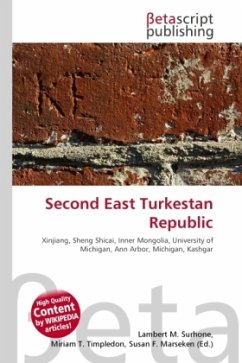
Ubashi Khan
Versandkostenfrei!
Versandfertig in 6-10 Tagen
23,99 €
inkl. MwSt.

PAYBACK Punkte
12 °P sammeln!
High Quality Content by WIKIPEDIA articles! Ubashi Khan was a Torghut-Kalmyk prince and the last Khan of the Kalmyk Khanate. In January 1771, he led the return migration of the majority of the Kalmyk people from the Kalmyk steppe to Dzungaria, their ancestral homeland. Kalmuk Steppe, or Kalmyk Steppe is a steppe of approximately 100,000 km², bordering the northwest Caspian Sea, bounded by the Volga on the N.E., the Manych on the S.W. and the territory of the Don Cossacks on the N.W. The historic home to the Kalmuck or Kalmyk Tatars, it is in the Federal subject of Astrakhan Oblast. The wester...
High Quality Content by WIKIPEDIA articles! Ubashi Khan was a Torghut-Kalmyk prince and the last Khan of the Kalmyk Khanate. In January 1771, he led the return migration of the majority of the Kalmyk people from the Kalmyk steppe to Dzungaria, their ancestral homeland. Kalmuk Steppe, or Kalmyk Steppe is a steppe of approximately 100,000 km², bordering the northwest Caspian Sea, bounded by the Volga on the N.E., the Manych on the S.W. and the territory of the Don Cossacks on the N.W. The historic home to the Kalmuck or Kalmyk Tatars, it is in the Federal subject of Astrakhan Oblast. The western Kalmuck Steppe occupied by the Ergeni hills, is deeply trenched by ravines and rises 300 and occasionally 630 ft. above the sea. It is built up of Tertiary deposits, belonging to the Sarmatian division of the Miocene period and covered with bess and black earth, and its escarpments represent the old shore-line of the Caspian. No Caspian deposits are found on or within the Ergeni hills. These hills exhibit the usual black earth flora, and they have a settled population.












